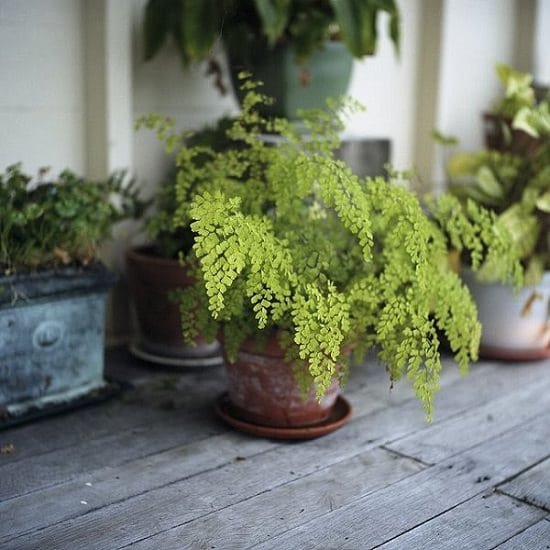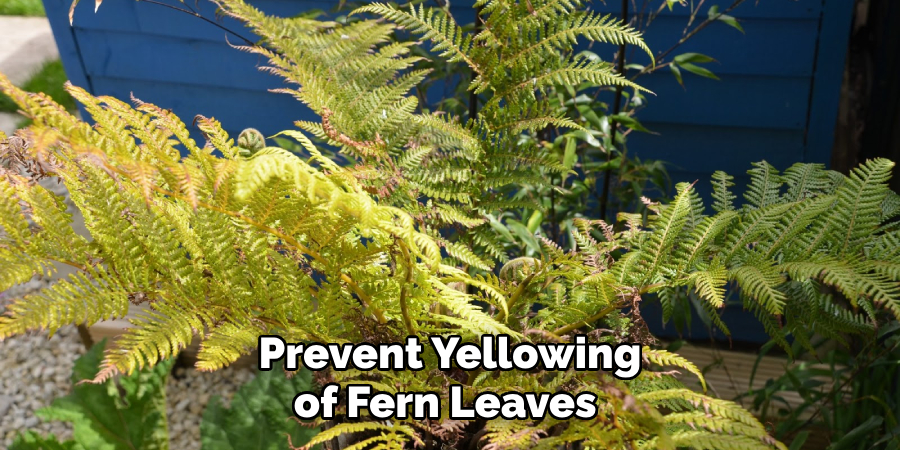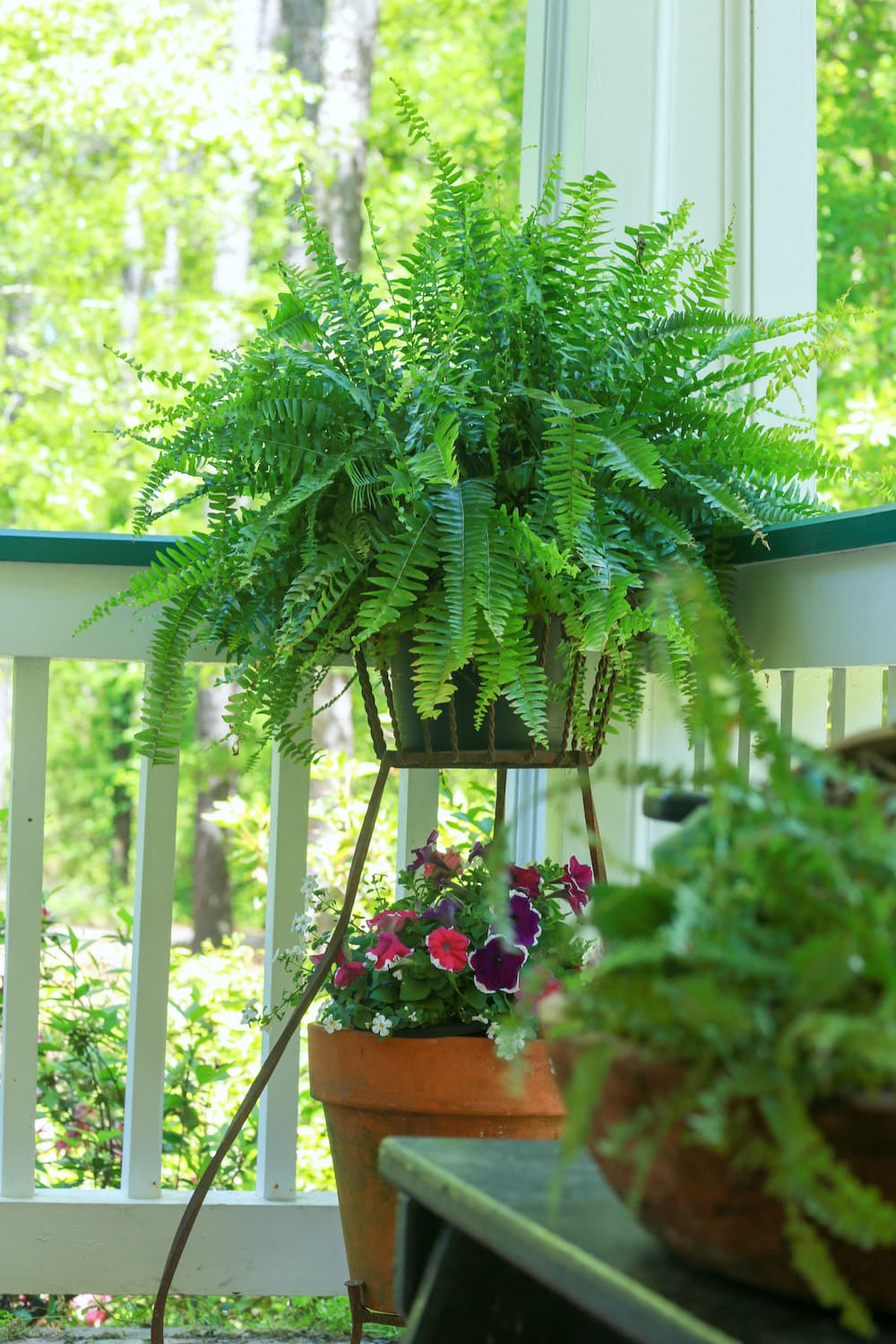To make ferns greener, provide them with adequate sunlight and water. Additionally, ensure proper drainage and use a balanced fertilizer regularly.
Furthermore, maintain consistent humidity levels and avoid over-fertilization to prevent damage to the ferns. Avoid placing ferns in direct sunlight as it can scorch their delicate leaves. Proper care and maintenance are essential for maintaining the green color and overall health of ferns.
By following these guidelines, you can promote vibrant and lush green foliage in your ferns.

Credit: balconygardenweb.com
How to Make Ferns Greener: Step by Step Guide
Understanding Ferns
Ferns are beautiful plants that can add a touch of lush greenery to any indoor or outdoor space. Understanding ferns is crucial for keeping them healthy and vibrant. There are various types of ferns, each with its own unique characteristics.
Some common types include boston ferns, maidenhair ferns, and bird’s nest ferns. They vary in size, shape, and foliage patterns. Ferns are known for their delicate, feathery leaves and their preference for shaded, moist environments. They thrive in well-draining soil and require regular watering to maintain their vibrant green color.
By providing the right conditions and care, you can ensure that your ferns stay healthy and greener for longer periods. So, make sure to choose the right type of fern for your space and give them the love and attention they deserve.
Essential Care For Greener Ferns
To keep your ferns looking their best, it’s important to provide them with the essential care they need. In terms of light requirements, ferns thrive in indirect light or partial shade. Avoid placing them in direct sunlight, as it can scorch their delicate fronds.
When it comes to watering, ferns prefer consistently moist but not waterlogged soil. It’s best to water them thoroughly and then allow the top inch of soil to dry out slightly before watering again. Maintaining the right temperature and humidity is crucial for ferns.
They prefer moderate temperatures between 60-75°f and thrive in high humidity. Misting their fronds or placing them near a humidifier can help create the ideal environment. When it comes to soil and fertilizer, ferns do well in well-draining, rich organic soil.
Fertilize them monthly during the growing season using a balanced liquid fertilizer diluted to half strength. With proper care, your ferns will have vibrant, lush green foliage.
Troubleshooting Common Issues
Ferns can sometimes face common issues, but troubleshooting them is essential for greener growth. When it comes to pest control, inspect the plants regularly to identify any unwanted visitors. Common diseases such as fungal infections can be treated by applying appropriate fungicides.
Yellowing leaves may be caused by overwatering, insufficient sunlight, or nutrient deficiencies. To address this, adjust the watering schedule, provide adequate light, and use balanced fertilizers. Avoid excessive use of chemicals and opt for organic solutions whenever possible. Regularly dust the leaves and keep the surrounding area clean to prevent infestations.
By following these simple steps, you can ensure your ferns stay lush and vibrant. Remember to prioritize natural remedies and maintain proper care for optimal results.
Advanced Techniques For Vibrant Ferns
Ferns can be made greener by employing propagation methods. These techniques aid in the growth of vibrant ferns. Pruning and trimming are essential for enhancing their appearance. Regular maintenance ensures healthy and lush ferns. Adding plant accessories such as decorative pots or hanging baskets can further enhance their aesthetic appeal.
These accessories provide an eye-catching display. With the right techniques and care, ferns can thrive and become even greener. By following these advanced methods, you can achieve vibrant ferns that will impress any observer. So, why not give it a try and watch your ferns flourish in their green glory!
Frequently Asked Questions For How To Make Ferns Greener
How Often Should I Water My Ferns To Make Them Greener?
Water your ferns once a week, ensuring the soil is evenly moist but not waterlogged. Over-watering can cause root rot, while under-watering can lead to dryness. Monitor the moisture level by checking the top inch of soil. Adjust watering frequency based on the specific needs of your fern species and environmental conditions.
What Type Of Light Do Ferns Need To Thrive And Turn Greener?
Ferns require indirect or filtered light to thrive and maintain their vibrant green color. They prefer bright, but not direct sunlight, as excessive light exposure can scorch their leaves. Place your ferns near north or east-facing windows, or provide artificial grow lights if natural light is limited.
How Do I Prevent Yellowing Of Fern Leaves And Promote Greener Growth?

To prevent yellowing of fern leaves and promote greener growth, ensure adequate humidity levels. Mist the foliage regularly, place the ferns on a tray of wet pebbles, or use a humidifier. Also, avoid over-fertilizing, as this can lead to leaf discoloration.
Use a balanced liquid houseplant fertilizer diluted according to package instructions once a month.
Conclusion
To bring out the vibrant green in your ferns, it is important to understand their specific needs and provide them with the right care. Start by ensuring they are in the optimal environment with adequate light, humidity, and temperature. Regularly check the soil moisture and water accordingly, allowing it to slightly dry out between waterings.
Avoid over-fertilizing, as it can lead to leaf burn and other issues. Instead, opt for a slow-release fertilizer or organic alternatives. Pruning your ferns can also encourage new growth and improve their appearance. Be patient and consistent with your care routine, as it may take some time for the ferns to respond and regain their greenness.
By following these tips and giving your ferns the care they need, you can enjoy the beauty of lush, green foliage in your space.

